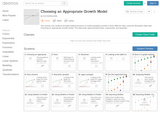
MPS teacher designed resource adapted from the Illustrative Math Task: Choosing an Appropriate Growth Model.
- Subject:
- Algebra
- Mathematics
- Material Type:
- Activity/Lab
- Author:
- MPS Alegrba Work Group
- Date Added:
- 05/22/2019

MPS teacher designed resource adapted from the Illustrative Math Task: Choosing an Appropriate Growth Model.

This task suggests methods of introducing and continuing choral counting in the classroom.
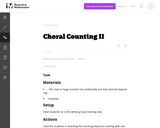
Teachers (and then students) lead the class in chanting numbers from 1 to 120.
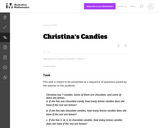
The purpose of this task is for students to find different pairs of numbers that sum to 7.
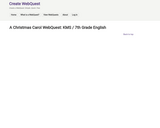
From the task itself on the Webquest: "Now that our class has completed reading A Christmas Carol, by Charles Dickens, you are going to embark on a journey to ensure that Scrooge does not revert back to his miserly ways. In order to ensure this, you will work both individually and together as a team. Many of the tasks will be completed online, but some involve other skills. Follow these steps and you will help keep Scrooge from ever becoming a misanthrope again!"
These activities include: A Scavenger Hunt that provides links to various sites that enable to students to develop a deeper understanding of Victorian England as the setting of the text; a Holiday Menu (exploring cultural aspects of the holiday); Apology Letters written as Scrooge to various characters); Symbolic Tokens (to enable Scrooge to remember his lessons); all compiled as a group 'gift', which I thought was a wonderful symbol of just exactly what learning is :)
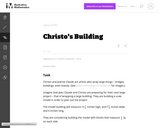
This task is primarily about volume and surface area, although it also gives students an early look at converting between measurements in scale models and the real objects they correspond to.
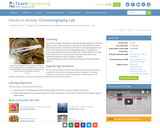
To increase students' awareness of possible invisible pollutants in drinking water sources, students perform an exciting lab requiring them to think about how solutions and mixtures exist even in unsuspecting places such as ink. They use alcohol and chromatography paper to separate the components of black and colored marker ink. Students witness first-hand how components of a solution can be separated, even when those individual components are not visible in solution.

This lesson has students solving the mystery of a note by conducting chromatography. They will test different washable markers and see that different marker colors are made up of various pigments. They will compare and contrast the note chromatography with other chromatography results from a variety of markers.
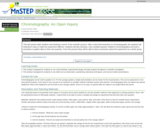
This is a laboratory investigation where students will use the scientific method to solve a new, experimental question in chromatography.
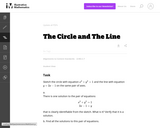
Although this task is fairly straightforward, it is worth noticing that it does not explicitly tell students to look for intersection points when they graph the circle and the line. Thus, in addition to assessing whether they can solve the system of equations, it is assessing a simple but important piece of conceptual understanding, namely the correspondence between intersection points of the two graphs and solutions of the system.
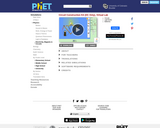
This is an interactive web lab that allows students to create a simple DC Circuit. The tools include batteries, switches, resistors and volt meters. There are several model lesson plans available to download that share ideas on how to use this lab as an inquiry tool with students.
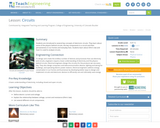
Students are introduced to several key concepts of electronic circuits. They learn about some of the physics behind circuits, the key components in a circuit and their pervasiveness in our homes and everyday lives. Students learn about Ohm's Law and how it is used to analyze circuits.

Students use the same method as in the activity from lesson 2 of this unit to explore the magnetism due to electric current instead of a permanent magnet. Students use a compass and circuit to trace the magnetic field lines induced by the electric current moving through the wire. Students develop an understanding of the effect of the electrical current on the compass needle through the induced magnetic field and understand the complexity of a three dimensional field system.
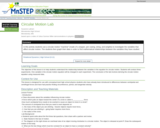
Students investigate the relationship between variables in the centripetal force equation.
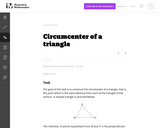
This task shows that the three perpendicular bisectors of the sides of a triangle all meet in a point, using the characterization of the perpendicular bisector of a line segment as the set of points equidistant from the two ends of the segment. The point so constructed is called the circumcenter of the triangle.
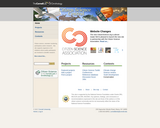
This site is a gateway to projects involving public participants in real-world research, with hopes of fostering connections for sharing ideas and resources.
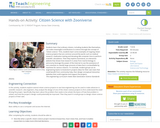
Students learn that ordinary citizens, including students like themselves, can make meaningful contributions to science through the concept of "citizen science." First, students learn some examples of ongoing citizen science projects that are common around the world, such as medical research, medication testing and donating idle computer time to perform scientific calculations. Then they explore Zooniverse, an interactive website that shows how research in areas from marine biology to astronomy leverage the power of the Internet to use the assistance of non-scientists to classify large amounts of data that is unclassifiable by machines for various reasons. To conclude, student groups act as engineering teams to brainstorm projects ideas for their own town that could benefit from community help, then design conceptual interactive websites that could organize and support the projects.

Students will learn about citizenship, look at a variety of examples, and work together to think about action they could take in their community
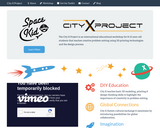
The City X Project is an international educational workshop for 8-12 year-old students that teaches creative problem solving using 3D printing technologies and the design process. This 6-10 hour workshop is designed for 3rd-6th grade classrooms but can be adapted to fit a variety of environments. Read a full overview of the experience here: http://www.cityxproject.com/workshop/
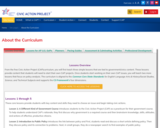
CAP is a free project-based learning program for civics and government. Think of it as a culmination of students’ social studies education, a chance for them to apply what they have learned to the real world and impact an issue that matters to them.
From the CAP curriculum, you will first teach three lessons that are tied to government/civics content. These lessons provide content that students will need to start their own CAP projects. Once students start working on their own CAP issues, you will teach two more lessons that focus on policy analysis.
A CAP project is an issue or problem students select, research and then identify propose and submit a solution for.
CAP provides a bundle of additional lessons for you to choose from, based on the needs and interests of your students.
Students could select issues related to school, community, or even national or global issues. CAP students identify an issue or problem that matters to them, connect it to public policy, then take “civic actions” to try to impact their selected issue/problem. It is up to you, the teacher, if you want to limit the scale of the issues they choose.
In any case, it is key that you require students to make the connection to public policy if you are integrating CAP into your government course.